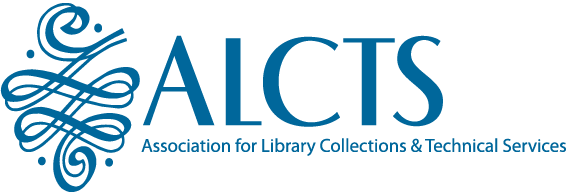Contact: Christine McConnell
ALCTS
(312) 280-5037
cmcconnell@ala.org
Preservation Week @ your library
During Preservation Week @ your library, April 21–27, 2013, the Association for Library Collections & Technical Services (ALCTS), a division of the American Library Association (ALA), encourages libraries and other institutions to use Preservation Week to connect communities through events, activities, and resources that highlight what we can do, individually and together, to preserve our personal and shared collections.
Why is preservation important?
In 2005 the first comprehensive national survey of the condition and preservation needs of the nation’s collections reported that U.S. institutions hold more than 4.8 billion items. Libraries alone hold 3 billion items (63 percent of the whole). A treasure trove of uncounted additional items is held by individuals, families, and communities.
Some 630 million items in collecting institutions require immediate attention and care. Eighty percent of these institutions have no paid staff assigned responsibility for collections care; 22 percent have no collections care personnel at all. Some 2.6 billion items are not protected by an emergency plan. As natural disasters of recent years have taught us, these resources are in jeopardy should a disaster strike. Personal, family, and community collections are equally at risk.
Key environmental factors that place collections at risk:
- Light: Ultraviolet rays from natural and artificial sources can cause fading and disintegration.
- Pollutants: Dust is abrasive and can accelerate harmful chemical reactions.
- Heat: High temperatures can accelerate deterioration.
- Moisture: High humidity promotes mold growth, corrosion, and degradation, while excessive dryness can cause drying and cracking. Fluctuations between extremes can cause warping, buckling and flaking.
Key items that should be preserved include historical materials that are unpublished and one-of-a-kind, such as:
- architectural drawings
- artifacts
- audio and video recordings
- diaries
- genealogical information
- letters
- maps
- memoirs/reminiscences
- minutes/reports
- photo albums and photographs
- printed materials
- professional and business papers
- speeches/lectures
* Source: Utah State History website: http://history.utah.gov/experience_history/preserve_history/documents_photos.html
Preservation Fast Facts
- More than 4.8 Billion Artifacts are held in public trust by more than 30,000 archives, historical societies, libraries, museums, scientific research collections, and archaeological repositories in the United States. 1.3 billion of these items are at risk of being lost.
- Roughly 70 percent of institutions need additional conservation/preservation training for their staff and volunteers.
- A majority of collecting institutions, more than 80 percent, do not have a disaster plan in place that can be executed by trained staff.
- Nearly a quarter of all the 21 million paintings, sculptures, and works of decorative art in U.S. collections need conservation treatment or improved care and conditions.
- More than 50 percent of collecting institutions have had their collections damaged by light.
- More than 65 percent of collecting institutions report damage to their collections due to improper storage.
*Source: “A Public Trust at Risk: The Heritage Health Index Report on the State of America’s Collections,” Library of Congress, www.loc.gov/preserv/tops/laise/index.html
Association for Library Collections & Technical Services (ALCTS)
ALCTS enjoys a rich, 50-year history of service to its members and continues to improve the products and services it offers its members. With strategic and tactical plans firmly in place, ALCTS has a solid foundation from which to expand its influence.
Comprised of nearly 5,000 members from across the United States and 42 countries from around the globe, ALCTS is the premier resource for information specialists in collection development, preservation, and technical services. We are the leader in the development of principles, standards, and best practices for creating, collecting, organizing, delivering, and preserving information resources in all forms.
For more information on ALCTS and its work please visit www.ala.org/alcts.
-30-
